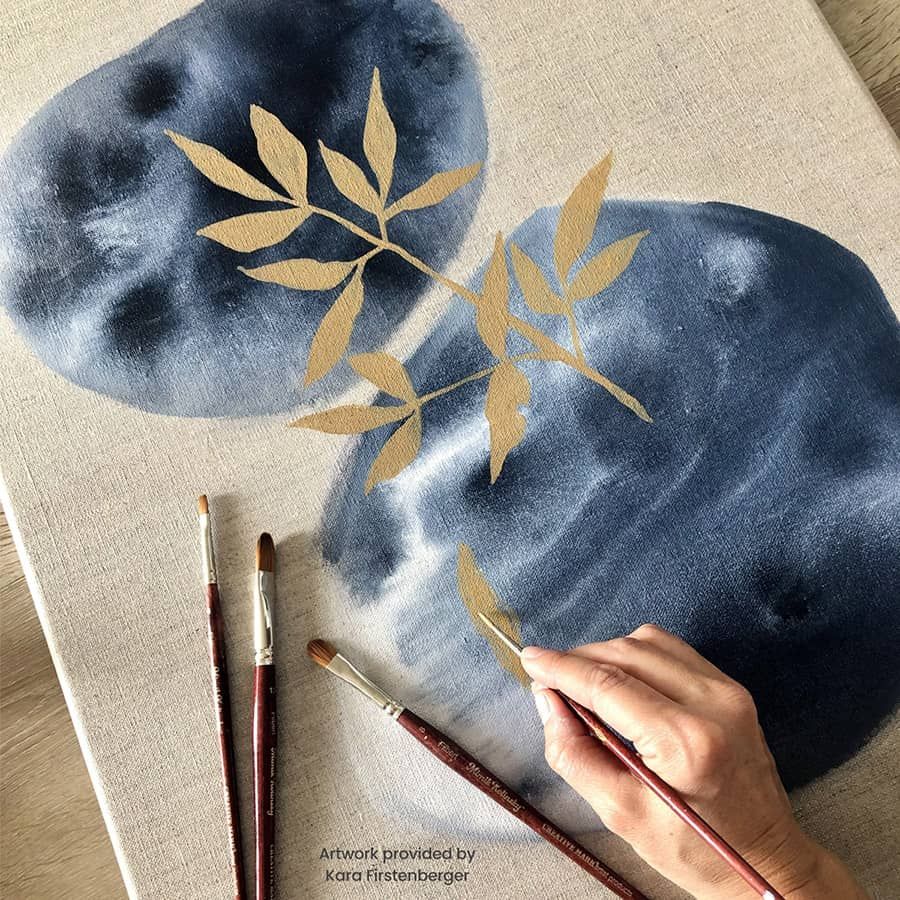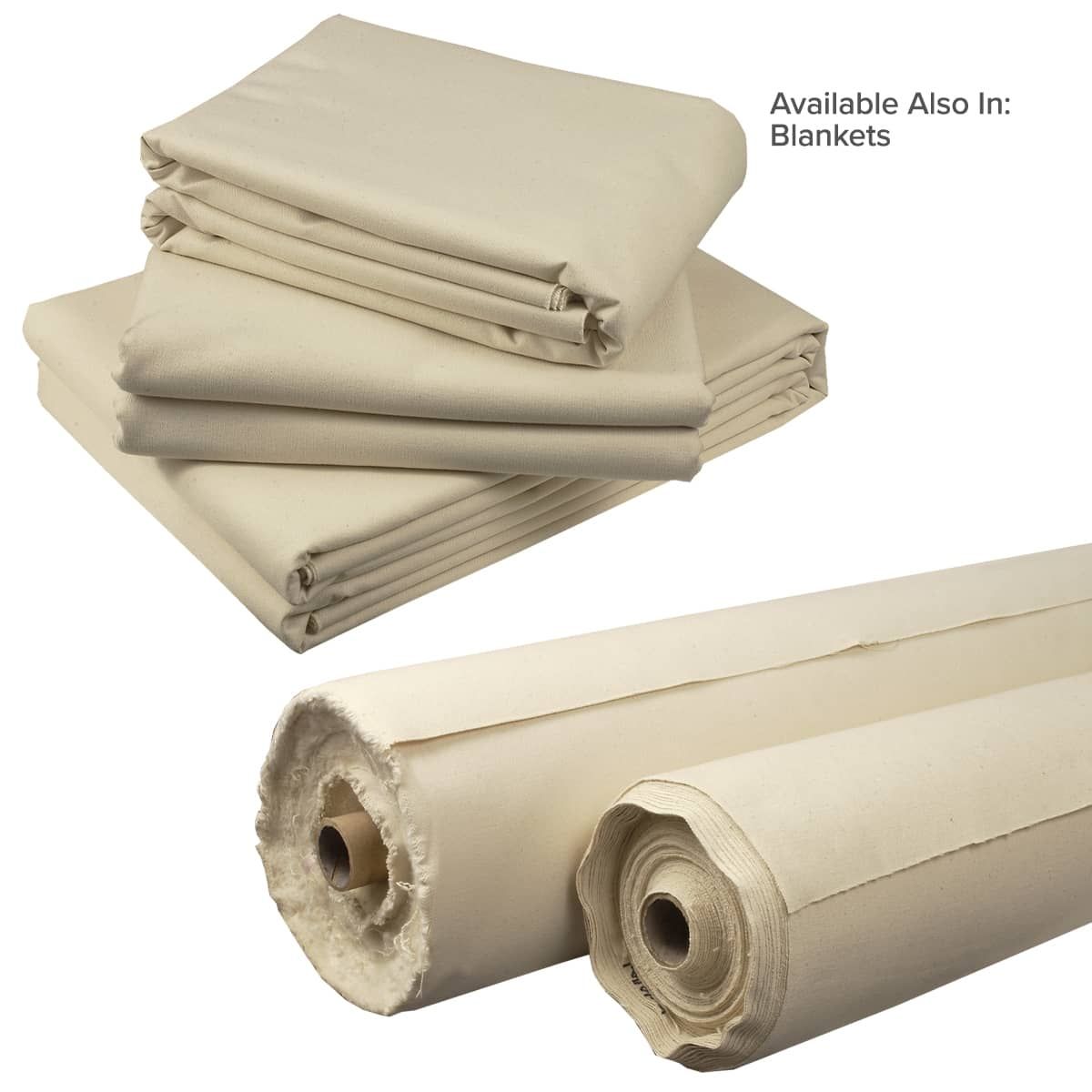How to choose the right canvas
Fresh art canvases are like a new landscape to build upon, an open road of new possibilities and a staple in any artist’s creative arsenal. Some painting novices may assume that all canvas is the same and made from… well, canvas… but there are different types to choose from.
Unfortunately, many of these artists just starting out might not realize that the term “canvas” is merely a catch-all for a stretched fabric over a frame, let alone what type best suits their needs.
Is linen or cotton canvas better?
The most common type of canvas is cotton duck or unprimed cotton duck; then there is linen; then within the last decade or so, canvases containing synthetic fiber (which is the least common).
Technically, each can be called a canvas and picking out the right one is a lot like picking out the perfect set of bed sheets. Here’s why.
Cotton duck canvas rolls is the most common and cheapest variety of canvas, but even it still comes in different weights and weaves. Cotton Duck is classified according to the weight of the surface texture, while weave is a term for how tight the threads are woven. The cheapest of cotton canvases are those which are loosely woven and lighter weight. Cotton fibers are shorter, stretcher strands than linen, which is a much longer strand and stronger fiber that offers less flexibility. The advantage to cotton canvases is that they are easier to stretch as a result, and are more affordable.

Linen as a result, is considered to be superior to cotton due to strength, and lack of stretch. Linen’s better strength and durability offers mold and mildew resistance as well, since it is not super absorbent by nature like cotton is, and is less prone to expand and contract due to moisture.
See our curated selection of: Stretched Linen Canvas
Linen also retains it’s natural oil content, which preserves the fiber’s long term flexibility. Cotton canvases (especially large ones) can become slack due to stretch with the weight of heavier paints and an increased surface size, requiring either the use of canvas keys or re-stretching the entire painting to take up the slack.
Linen is a more expensive option, primarily due to the best quality fibers being grown in western Europe, which promotes the perfect climate. Linen also provides a variety of weights and textures, from very smooth to extremely rough, that cotton canvas cannot match.
For some artists, selection options used to stop here; many are opposed to using synthetic fiber canvases as they are not traditional and have not been around long enough for artists to really gauge their durability. However, with modern technologies and milling, the synthetic category has become much wider within the last several decades, and has resulted in some cotton-poly blends that artists are flocking to. These blends help aide cotton in making the canvases stronger and less prone to stretch, and can make for smoother portrait canvases than traditional cotton alone while increasing the strength of the fabric. Some of the cheapest canvases, however, are made from a blend of cotton and lesser quality synthetic fibers, so it may take some investigation into the canvas construction to make a proper, educated purchase.
Cotton duck and linen canvas?

Cotton or Linen! Most experts agree that ultimately, hands down, linen is the right choice in terms of strength and reliability
When choosing between cotton duck and linen, the artist may want to bear in mind several things for consideration. Is the canvas purchase for painting studies? For students or a classroom setting? Is it being purchased to stretch for very large canvases where weight of the paint is something that should be taken into consideration?
Will the painting be subjected to changes of humidity or climate, which may make for additional slackness?
Are the paintings destined for gallery sales, commissions, or museums? IF the artist is a professional, the consideration for the painting’s life long term should be considered, and the most archival substrate purchased.
Most experts agree that ultimately, hands down, linen is the right choice in terms of strength and reliability.
The tighter weave gives it a stronger surface, especially for larger works– whereas cotton can distort a painting once it’s stretched.
However, cotton is generally easier to obtain and use, due to it’s very consistent machined weave.
See our curated selection of: Stretched Cotton Canvas
Once you’ve settled on a material, you’ve only just begun. The next phase is choosing how your canvas will be used as a painting surface. The options are to purchase already stretched canvases, canvas pads, canvas panels, or canvas rolls to make your own panels or canvases.
Here’s where the choice is less like picking out bed sheets and more like pumping gas; your choices are regular, middle grade, or high end.
- Stretched Canvas is the most expensive investment initially, but the most convenient of the choices. It arrives pre-stretched, usually completely primed and ready to paint as soon as it is unwrapped. Depending on how the canvas is stretched and stapled or tacked, it can easily be hung on a wall without a frame once painted.
- 16″x20″ Super Value 5 Pack, Creative Inspirations Canvas – Top Seller, Great value! High quality cotton duck canvas, Archival acid-free all media primer. Unprimed weight is 25% more than lessor canvases
- Super Value Canvas Packs from Jerry’s offer a great way to use good quality canvas at a lower price. At Jerry’s we only sell higher grade artist materials and these canvases are sure to fit your budget while still getting a better quality canvas than that of those being sold all over the internet and mass merchandise sites
- Canvas panels are cheaper versions of stretched canvas. They consist of heavy-duty card or wooden press board panels, to which the canvas or linen material is glued. Panels, although requiring framing after painting, are generally popular as they take up less storage space in a studio or storage, and are easy and less bulky to carry when traveling. Because panels are thin, they can be framed in most any framing moulding or metal frame, unlike canvas with requires a minimum rabbet depth for the wood stretcher.
- Canvas rolls are the cheapest way to get cotton or linen for painting, but also the least convenient and most time-consuming as they will require either stretching on canvas stretcher frames or making your own panels. It is exactly what it sounds like: a roll of canvas for you, the artist, to take what you want when you want– with endless size possibilities for custom canvas and panel sizes, not to mention being able to purchase and use any weight and weave cotton or linen canvas you wish– almost all pre-made canvases are a much more reduced selection of options, especially linens. Once you cut your canvas to size from the roll, it must be properly mounted on stretcher bars to create your painting foundation. There is an art to stretching canvas, and it takes practice to properly learn (especially to create clean, neatly folded corners!). Practicing is easier to learn with cotton canvases as they are more forgiving and easier to stretch.
- Mini Canvas – Want to go small to create collages, mini portraits, presents, gifts or even great for practice, studies and workshops? Small sized canvas is the perfect choice! They are still made of the same high quality materials as standard sizes.
Jerry’s Artarama is the number one authority on artist grade professional canvases.
Once you have learned the options available to you as an artist, it’s easier to narrow it down to what will work best for you, your time schedule, your painting style, and your wallet.
Custom Stretched Canvas

GO BIG – Make a a Super Large Wall Size Custom Canvas
We offer the largest range of sizes from as small as you want to as large as up to 83″ x 106″
Jerry’s professional custom stretched canvas department can help you create your own stretched canvas. Our high quality custom made canvas made to your own specifications. Jerry’s offers true custom quality with canvas stretching along with the largest selection of configurations available and choices including; all types of cotton and linen canvas with the best stretcher bars available in heavy, medium and slim profiles.
All of our custom made canvases are built to your specifications to suit your unique creations.
Here is a helpful guide to educate the artist, and help out to narrow down the selections that best suit you in our buyers guide: What Type of Canvas To Buy
More Resources






